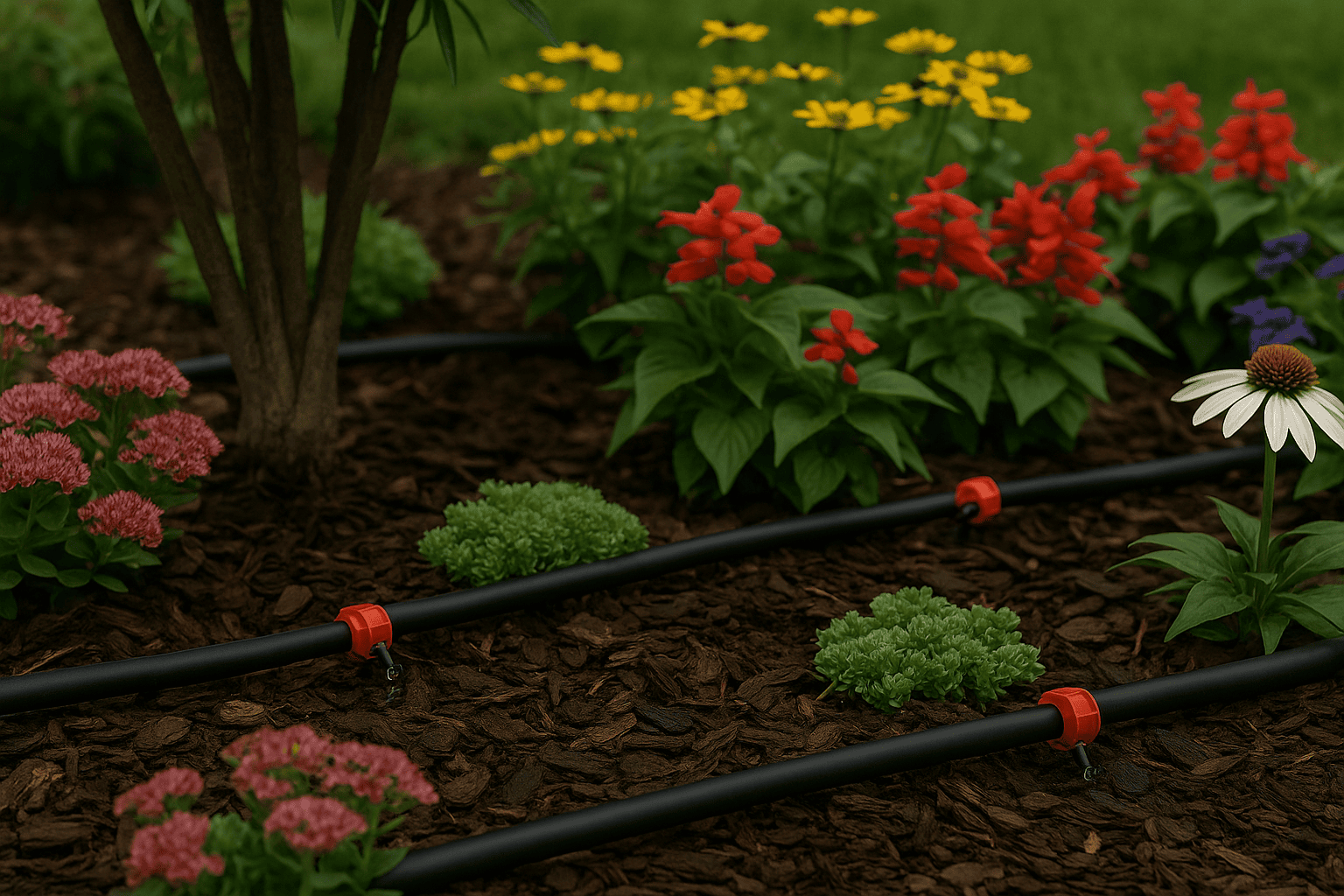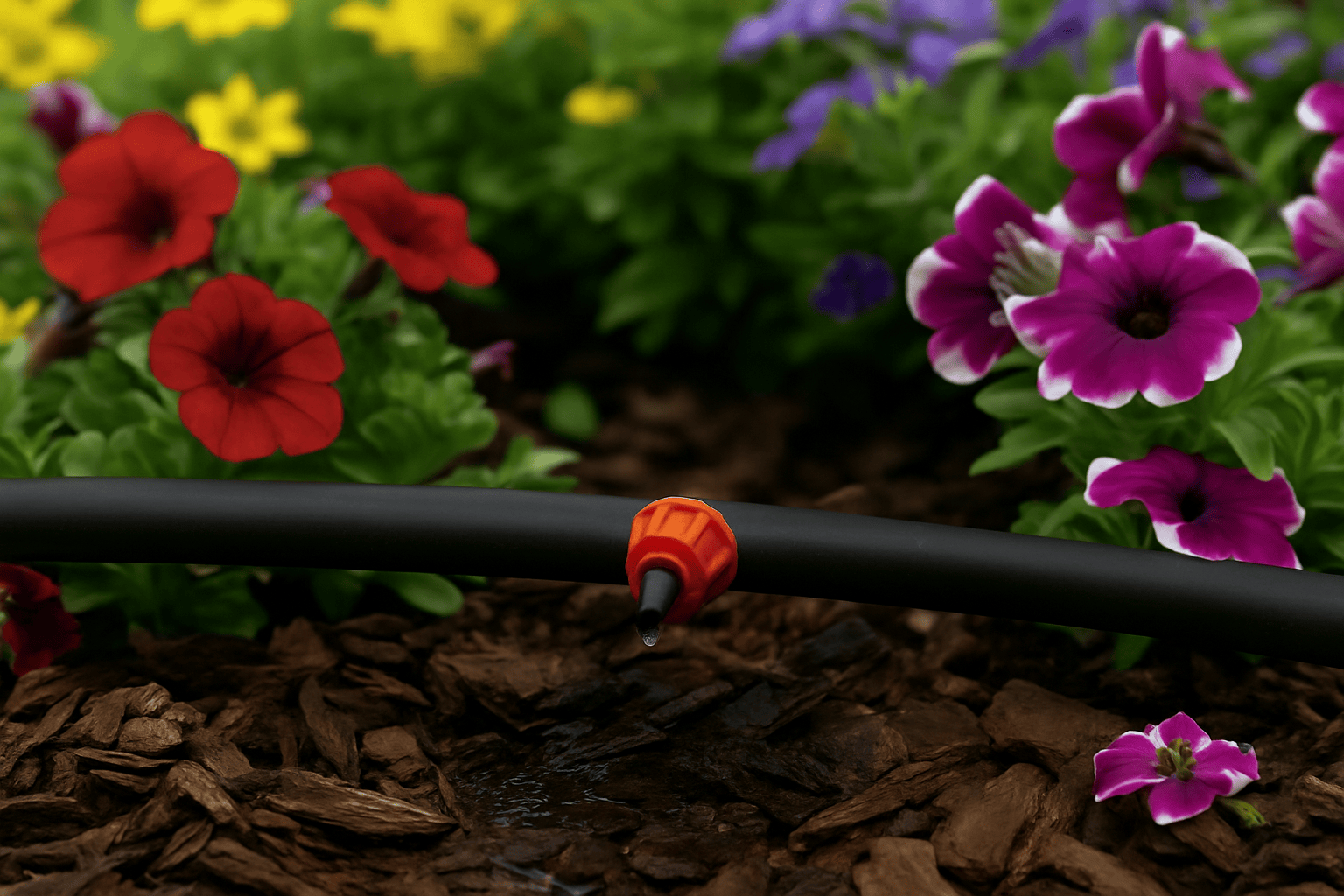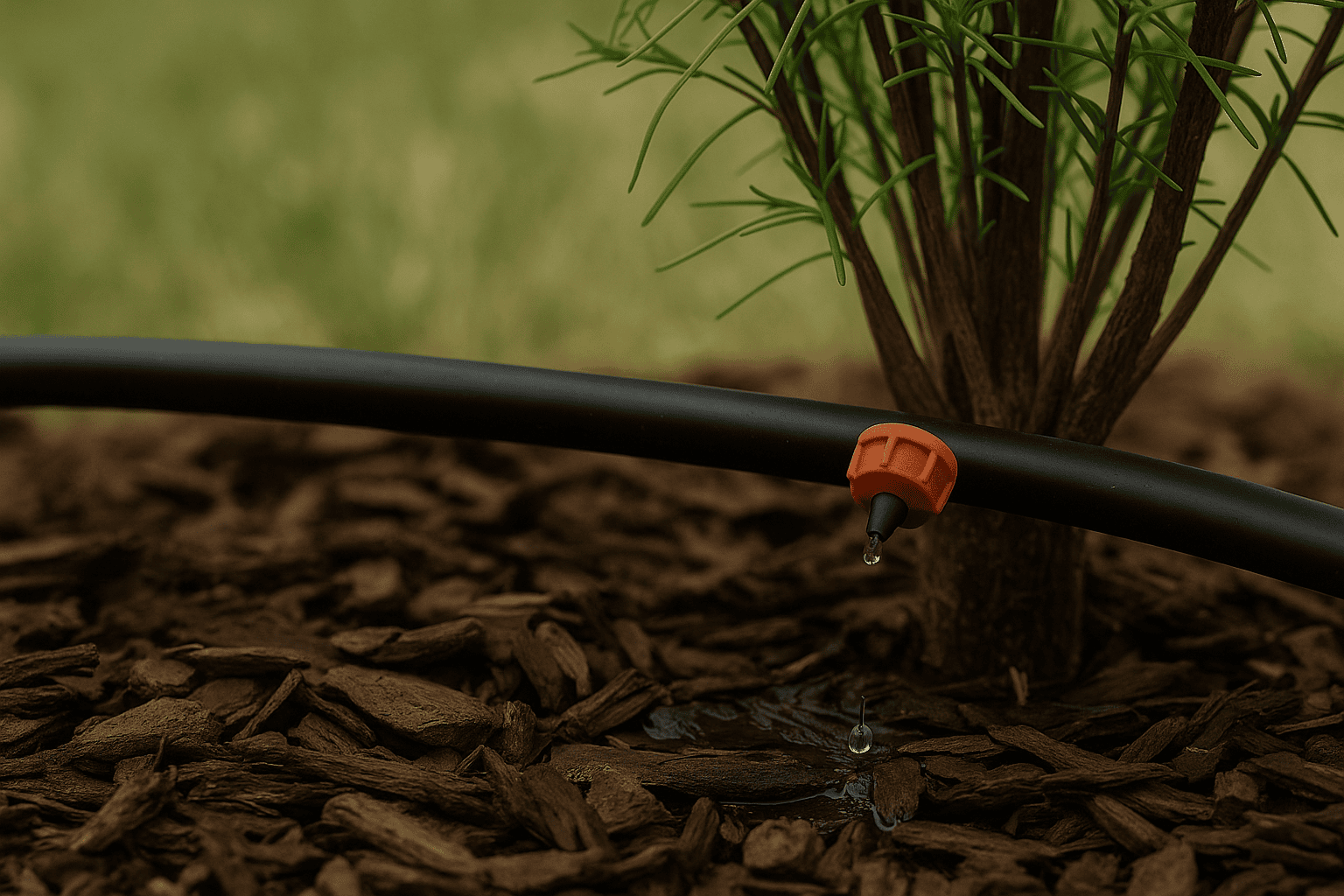Drip irrigation is becoming a go-to choice for homeowners who want to water smarter—not harder. Whether you're trying to reduce water waste, protect your plants, or simply make your landscaping easier to manage, drip systems offer a precise, low-maintenance solution.
Below, we answer some of the most common questions about drip irrigation to help you decide if it’s a fit for your property.

How to Use Drip Irrigation
Using a drip irrigation system is simple once it's installed. Water travels through flexible tubing that winds through your landscape beds. Small emitters or drip lines release water slowly at the base of each plant. You can set it on a timer to run early in the morning or late at night for maximum efficiency. The goal is to soak the root zone—not the leaves—so your plants get deep, consistent hydration without the evaporation that comes from overhead spray.
What Are the Disadvantages of Drip Irrigation?
While drip systems are incredibly efficient, there are a few downsides to consider:
That said, most of these issues are preventable with good design and quality components—something TruScape specializes in.

What Is Drip Irrigation Best For?
Drip irrigation is ideal for:
It’s perfect for any area where you want precision without waste. If your landscape includes beds around the home or plants in mulch, drip irrigation gives you direct, root-focused watering that helps reduce disease and runoff.
Is Drip Irrigation Good?
Absolutely. Drip irrigation is widely regarded as one of the most water-efficient and plant-friendly irrigation methods available. It reduces evaporation, prevents overspray, and delivers water exactly where it's needed—making it a sustainable and smart long-term solution.
What Is a Major Downside to Drip Irrigation?
The most common issue is clogging, especially in lower-quality systems. If your water source has sediment or hard water, filters and pressure regulators are essential. At TruScape, we always include these safeguards in our installs to keep your system running reliably.
What’s a Drawback to Drip Irrigation?
One drawback is that you can’t easily see it working. Unlike spray heads, drip lines work quietly under mulch or soil, so it's not always obvious if there's a leak or clog unless you monitor performance. That’s why occasional inspections are part of TruScape’s recommended seasonal maintenance.

What’s the Cheapest Way to Do Drip Irrigation?
The cheapest way is a DIY kit from a hardware store—but these often lack durability, proper pressure regulation, and filtering. While they may be fine for small garden beds, they’re rarely a good long-term solution for full landscapes. TruScape installs professional-grade drip systems that are designed to last and save you money on water and plant replacement over time.
Thinking About Installing a Drip System?
If you're in Westmoreland County, PA and want to upgrade your landscape’s efficiency, we’d love to help. TruScape designs and installs custom irrigation systems that protect your plants, conserve water, and save you time.


